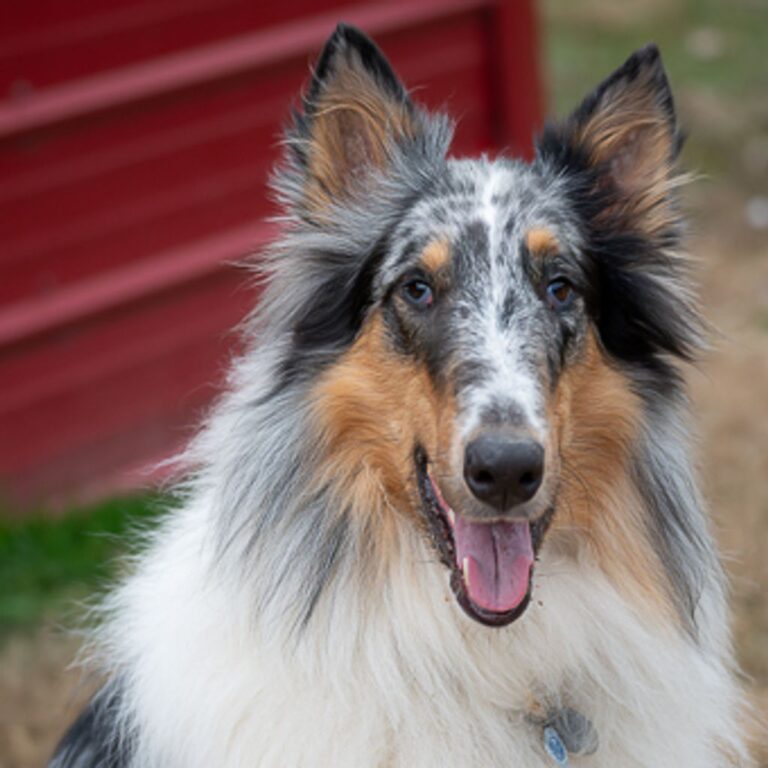A Guide to Identifying Mixed Breed Dogs
Mixed breed dogs, also known as mutts or mongrels, are dogs that have parents of different breeds. These dogs are becoming increasingly popular due to their unique characteristics and diverse personalities. Identifying a mixed breed dog can be a fun and exciting challenge, as they often exhibit a combination of physical traits from their parent breeds. In this guide, we will explore the various aspects of mixed breed dogs, including their physical characteristics, behavioral traits, health considerations, and how to care for them.
Key Takeaways
- Mixed breed dogs have parents of different breeds and exhibit a combination of physical traits.
- They are popular due to their unique characteristics and diverse personalities.
- Identifying a mixed breed dog can be a fun and exciting challenge.
- Mixed breed dogs may have a variety of coat types, sizes, and distinctive facial features.
- Their temperament, energy levels, and trainability can vary depending on their parent breeds.
Understanding Mixed Breed Dogs
What are Mixed Breed Dogs?
Mixed breed dogs, also known as mutts or mongrels, are dogs that have parents of different breeds. They are not purebred dogs and do not belong to any specific breed. Mixed breed dogs can have a wide variety of physical characteristics, temperaments, and health considerations.
One of the main reasons why mixed breed dogs are popular is their unique and unpredictable nature. Each mixed breed dog is a one-of-a-kind individual, with a combination of traits from their different parent breeds. This makes them interesting and exciting pets to have.
To identify a mixed breed dog, you can look for certain physical characteristics that are common in mixed breeds. These include variations in coat types, size and weight, and distinctive facial features. However, it’s important to remember that not all mixed breed dogs will exhibit these characteristics, as their appearance can vary widely.
Why are Mixed Breed Dogs Popular?
Mixed breed dogs, also known as mutts or designer dogs, have gained immense popularity in recent years. Their unique combination of traits makes them highly sought after by dog lovers. One of the main reasons mixed breed dogs are popular is because they often exhibit a blend of characteristics from different breeds, resulting in a one-of-a-kind pet.
Variety and unpredictability are key factors that attract people to mixed breed dogs. Unlike purebred dogs, which have predictable traits and appearances, mixed breed dogs offer a sense of surprise and individuality. Each mixed breed dog is a unique blend of genetics, resulting in a dog that stands out from the crowd.
Another reason for the popularity of mixed breed dogs is their potential for better health. Purebred dogs are often prone to genetic health issues due to inbreeding, while mixed breed dogs have a wider gene pool, reducing the risk of inherited diseases. This can give owners peace of mind knowing that their furry friend is less likely to develop certain health problems.
In addition, mixed breed dogs are often more affordable than purebred dogs. The cost of purchasing a purebred dog from a reputable breeder can be quite high, while mixed breed dogs are often available for adoption at a lower cost. This affordability factor makes mixed breed dogs accessible to a wider range of people, allowing more individuals and families to experience the joy of owning a dog.
Overall, the popularity of mixed breed dogs can be attributed to their unique traits, variety, potential for better health, and affordability. Whether it’s their distinctive appearance, their individual personalities, or the joy of giving a shelter dog a loving home, mixed breed dogs have captured the hearts of many dog enthusiasts.
How to Identify a Mixed Breed Dog
Identifying a mixed breed dog can be challenging, but there are several key characteristics to look for:
- Physical Appearance: Mixed breed dogs often exhibit a combination of traits from their parent breeds. Look for unique coat patterns, such as brindle or merle, and distinctive facial features like a snub nose or floppy ears.
- Size and Weight: Mixed breed dogs can vary in size and weight, depending on the breeds involved. Pay attention to the dog’s overall body structure and compare it to typical breed standards.
- Behavioral Traits: Mixed breed dogs may inherit certain behavioral traits from their parent breeds. Observe the dog’s temperament, energy levels, and trainability to get an idea of its breed mix.
Tip: Remember that identifying a mixed breed dog is not an exact science. It’s important to consider a combination of physical and behavioral characteristics to make an educated guess about the dog’s heritage.
- Genetic Testing: If you’re curious about your dog’s breed mix, genetic testing can provide more accurate information. There are several companies that offer DNA tests specifically designed for dogs.
- Consulting a Veterinarian: If you’re still unsure about your dog’s breed, consult a veterinarian. They can provide valuable insights based on their experience and knowledge.
Remember, the most important thing is to love and care for your mixed breed dog, regardless of its heritage.
Physical Characteristics of Mixed Breed Dogs
Coat Types in Mixed Breed Dogs
Mixed breed dogs can have a wide variety of coat types, depending on the breeds they are mixed with. Some common coat types include:
- Short Coat: These dogs have a short, smooth coat that requires minimal grooming. They are often low-shedding and easy to maintain.
- Long Coat: Mixed breed dogs with long coats have hair that is longer and may require more frequent grooming to prevent matting and tangling.
- Curly Coat: Some mixed breed dogs have curly or wavy hair, which can be prone to matting. Regular brushing and grooming is important to keep their coat healthy.
- Wire Coat: Dogs with a wire coat have a coarse, rough outer coat that requires regular stripping or hand-stripping to maintain its texture.
It’s important to note that coat types can vary even within the same litter of mixed breed dogs. This is because each puppy can inherit different traits from their parents. If you are considering adopting a mixed breed dog, it’s a good idea to research the specific breeds in their mix to get an idea of what their coat type might be like.

Size and Weight Variations
Mixed breed dogs can vary greatly in terms of size and weight. Since they are a combination of different breeds, their size can be influenced by the breeds they are mixed with. Some mixed breed dogs may be small and compact, while others may be large and muscular. It is important to note that there is no standard size or weight for mixed breed dogs, as each individual dog can have unique characteristics.
When considering the size and weight of a mixed breed dog, it is essential to take into account the size of the parent breeds. For example, if one of the parent breeds is a small breed like a Chihuahua, the mixed breed dog is likely to be smaller in size. On the other hand, if one of the parent breeds is a large breed like a Labrador Retriever, the mixed breed dog may be larger in size.
It is recommended to consult with a veterinarian or a professional dog breeder to get an estimate of the potential size and weight of a mixed breed dog. They can provide valuable insights based on their knowledge and experience with different breeds.
Distinctive Facial Features
Mixed breed dogs often have unique facial features that set them apart from purebred dogs. These features can vary widely depending on the breeds involved in the mix. Some common facial characteristics found in mixed breed dogs include:
- Muzzle shape: Mixed breed dogs may have a muzzle that is shorter or longer than average, giving them a distinct appearance.
- Ear shape and size: The shape and size of the ears can also vary greatly in mixed breed dogs. They may have floppy ears, erect ears, or a combination of both.
- Eye color: Mixed breed dogs can have a wide range of eye colors, including brown, blue, green, or a combination of colors.
It’s important to note that while these facial features can be unique and interesting, they do not necessarily indicate any specific breed or traits. Each mixed breed dog is truly one-of-a-kind, with a combination of characteristics from their parent breeds.

Behavioral Traits of Mixed Breed Dogs
Temperament and Personality
Mixed breed dogs can have a wide range of temperaments and personalities, as they inherit traits from multiple breeds. Adaptability is a common characteristic among mixed breed dogs, as they are often more flexible and adaptable to different environments compared to purebred dogs. They can easily adjust to new situations and households.
Socialization plays a crucial role in shaping the temperament of a mixed breed dog. Early and consistent socialization helps them develop into well-rounded and friendly companions. It is important to expose them to various people, animals, and environments to ensure they grow up to be confident and sociable.
Exercise needs vary among mixed breed dogs depending on the breeds involved. Some may have high energy levels and require plenty of exercise, while others may be more laid-back. It is important to provide them with regular physical activity to keep them mentally and physically stimulated.
Here are some important points to consider when it comes to the temperament and personality of mixed breed dogs:
- They can exhibit a combination of traits from their parent breeds, making them unique and unpredictable.
- They may have a mix of positive and negative traits, so it’s important to understand and manage their individual needs.
- Training and positive reinforcement techniques are essential for shaping their behavior and ensuring they are well-behaved.
Tip: Remember that every mixed breed dog is an individual, and their temperament and personality can vary widely. Spend time getting to know your mixed breed dog and understand their unique needs and preferences.
Energy Levels and Exercise Needs
Mixed breed dogs can have varying energy levels and exercise needs. Some mixed breeds may have high energy levels and require daily vigorous exercise to keep them mentally and physically stimulated. On the other hand, some mixed breeds may have lower energy levels and be content with moderate exercise such as daily walks.
It is important to assess the individual dog’s energy level and provide the appropriate amount of exercise to prevent behavioral issues and promote overall well-being. Regular exercise not only helps to burn off excess energy but also helps to maintain a healthy weight and prevent obesity.
To ensure that your mixed breed dog gets enough exercise, consider incorporating interactive playtime and mental stimulation activities into their daily routine. This can include playing fetch, puzzle toys, and obedience training. Providing a variety of activities will help keep your mixed breed dog engaged and prevent boredom.
Remember, each mixed breed dog is unique, and their exercise needs may vary. It is important to observe your dog’s behavior and adjust their exercise routine accordingly. Consulting with a veterinarian or a professional dog trainer can also provide valuable guidance on meeting your mixed breed dog’s exercise needs.
Trainability and Intelligence
When it comes to trainability and intelligence, mixed breed dogs can vary widely. Some mixed breeds are highly trainable and quick to learn, while others may be more independent and stubborn. Consistency and positive reinforcement are key when training a mixed breed dog.
It’s important to understand that intelligence in dogs is not solely determined by their breed. Mixed breed dogs can inherit a combination of traits from their parent breeds, which can affect their trainability and problem-solving abilities.
To determine the trainability of a mixed breed dog, it’s helpful to consider the characteristics of their parent breeds. For example, if one of the parent breeds is known for being highly trainable, there’s a higher chance that the mixed breed dog will also be trainable.
Here are some tips for training a mixed breed dog:
- Start training early: Begin training your mixed breed dog as soon as you bring them home. This will help establish good habits and prevent any unwanted behaviors from developing.
- Use positive reinforcement: Reward your dog with treats, praise, and playtime when they exhibit desired behaviors. This will motivate them to continue learning and obeying commands.
- Be patient and consistent: Training takes time and consistency. Set aside regular training sessions and be patient with your dog as they learn new commands and behaviors.
- Seek professional help if needed: If you’re having difficulty training your mixed breed dog, consider seeking guidance from a professional dog trainer who specializes in mixed breeds.
Remember, every dog is unique, and their trainability and intelligence can vary. With patience, consistency, and positive reinforcement, you can help your mixed breed dog reach their full potential.
Health Considerations for Mixed Breed Dogs
Common Health Issues
Mixed breed dogs are generally known for their resilience and hybrid vigor, which can make them less prone to certain health issues compared to purebred dogs. However, it’s important to be aware of some common health issues that mixed breed dogs may still be susceptible to:
- Hip dysplasia: This is a condition where the hip joint doesn’t develop properly, leading to pain and mobility issues. Regular exercise and maintaining a healthy weight can help reduce the risk.
- Allergies: Just like purebred dogs, mixed breed dogs can develop allergies to certain foods, environmental factors, or parasites. It’s important to identify and manage any allergies to ensure the dog’s well-being.
- Dental problems: Dental hygiene is important for all dogs, including mixed breeds. Regular brushing and dental check-ups can help prevent dental diseases.
Tip: Regular veterinary check-ups and preventive care are essential for maintaining the overall health of your mixed breed dog.
Genetic Testing and Health Screening
Genetic testing and health screening are important considerations for mixed breed dogs. Genetic testing can provide valuable information about the breed composition of a mixed breed dog, helping owners better understand their dog’s potential health risks and behavioral traits. It can also help identify any genetic disorders or predispositions that may be present in the dog. Health screening, on the other hand, involves regular check-ups and tests to monitor the overall health and well-being of the dog. This can include vaccinations, blood tests, and examinations for common health issues. Regular health screening can help detect any potential health problems early on, allowing for prompt treatment and management.
When it comes to genetic testing, there are various options available. Some tests can determine the breed composition of a mixed breed dog with a high level of accuracy, while others can identify specific genetic markers for certain health conditions. It’s important to consult with a veterinarian or a reputable genetic testing provider to determine the most appropriate tests for your mixed breed dog.
In addition to genetic testing and health screening, proper nutrition and regular exercise are essential for the overall health and well-being of mixed breed dogs. Providing a balanced diet and ensuring they get enough physical activity can help prevent obesity and other health issues. Regular veterinary check-ups and vaccinations are also important to keep your mixed breed dog healthy and protected against common diseases.
Important tips:
- Consult with a veterinarian or genetic testing provider to determine the most appropriate tests for your mixed breed dog.
- Regular health screening can help detect potential health problems early on.
- Provide a balanced diet and regular exercise to keep your mixed breed dog healthy.
- Schedule regular veterinary check-ups and vaccinations to protect against common diseases.
Nutrition and Dietary Requirements
Proper nutrition is essential for the overall health and well-being of mixed breed dogs. Balanced and nutrient-rich diets are important to support their energy levels and maintain a healthy weight. Here are some key considerations when it comes to the nutrition and dietary requirements of mixed breed dogs:
- Protein: High-quality protein sources, such as chicken, beef, or fish, should be the main ingredient in their diet. Protein is crucial for muscle development and repair.
- Carbohydrates: Complex carbohydrates, like whole grains and vegetables, provide a steady source of energy for mixed breed dogs.
- Fats: Healthy fats, such as omega-3 fatty acids from sources like fish oil, contribute to a shiny coat and promote joint health.
Tip: It’s important to consult with a veterinarian to determine the specific nutritional needs of your mixed breed dog. They can recommend the appropriate portion sizes and help you choose a balanced diet that meets their individual requirements.
Remember, providing your mixed breed dog with a nutritious diet is key to ensuring their overall health and longevity.
Caring for a Mixed Breed Dog
Grooming and Maintenance
Grooming and maintenance are important aspects of caring for a mixed breed dog. Regular grooming helps keep their coat healthy and free from mats and tangles. It also allows you to check for any skin issues or parasites. Depending on the type of coat your mixed breed dog has, grooming needs may vary. Some mixed breed dogs have short coats that require minimal grooming, while others have longer coats that need more frequent brushing and occasional trimming.
In addition to grooming, regular maintenance is necessary to keep your mixed breed dog in good health. This includes regular veterinary check-ups to monitor their overall health and address any potential issues. It is also important to maintain a balanced diet and provide them with proper nutrition to support their overall well-being.
Here are some tips for grooming and maintaining a mixed breed dog:
- Brush their coat regularly to prevent matting and remove loose hair.
- Trim their nails regularly to prevent overgrowth and discomfort.
- Clean their ears regularly to prevent infections.
- Brush their teeth regularly to maintain good oral hygiene.
Remember, each mixed breed dog is unique, so it’s important to understand their specific grooming and maintenance needs. Consult with a veterinarian or professional groomer for personalized advice and guidance.
Exercise and Mental Stimulation
Regular exercise and mental stimulation are crucial for the overall well-being of mixed breed dogs. Physical activity helps to keep them physically fit and maintain a healthy weight. It also helps to prevent boredom and destructive behaviors that can arise from pent-up energy.
In addition to physical exercise, mental stimulation is equally important for mixed breed dogs. Engaging their minds through interactive toys, puzzle games, and training sessions can help prevent behavioral issues and promote mental sharpness.
To ensure that your mixed breed dog gets enough exercise and mental stimulation, consider the following:
- Daily walks or runs: Regular walks or runs provide an opportunity for your dog to explore their surroundings, socialize with other dogs, and release pent-up energy.
- Interactive toys: Provide your dog with toys that require problem-solving skills, such as treat-dispensing toys or puzzle games.
- Training sessions: Regular training sessions not only help to teach your dog basic commands but also provide mental stimulation and strengthen the bond between you and your dog.
- Enrichment activities: Engage your dog in activities that stimulate their senses, such as scent games, hide-and-seek, or agility training.
Remember, each mixed breed dog is unique, so it’s important to tailor their exercise and mental stimulation routine to their individual needs and abilities.
Training and Socialization
Training and socialization are crucial for all dogs, including mixed breeds. Consistent and positive training methods should be used to teach basic commands and good behavior. Socialization is important to expose your mixed breed dog to different people, animals, and environments. This helps them develop confidence and adaptability.
To ensure successful training and socialization, consider the following:
- Start early: Begin training and socializing your mixed breed dog as early as possible. Puppies have a critical period for learning and social development.
- Be patient: Training takes time and effort. Reward-based training methods are effective in motivating and reinforcing desired behaviors.
- Consistency is key: Use consistent cues and commands to avoid confusion. Establish a routine for training sessions and social interactions.
Tip: Enroll your mixed breed dog in obedience classes or seek guidance from a professional dog trainer to ensure proper training and socialization.
Conclusion
In conclusion, identifying mixed breed dogs can be a challenging but rewarding task. By understanding the characteristics and traits of different dog breeds, observing physical features and behaviors, and utilizing DNA testing, dog owners and enthusiasts can gain valuable insights into the unique heritage of their mixed breed companions. Remember, every mixed breed dog is a one-of-a-kind individual, and embracing their diversity and uniqueness is what makes them truly special.
Frequently Asked Questions
Are mixed breed dogs healthier than purebred dogs?
Mixed breed dogs often have a lower risk of inheriting certain genetic health issues that are common in purebred dogs. However, it’s important to note that mixed breed dogs can still develop health problems, so regular vet check-ups and proper care are essential.
How do I determine the breed mix of my dog?
Determining the breed mix of a dog can be challenging, especially if it’s a mix of multiple breeds. DNA testing kits are available that can provide insights into the breed composition of a mixed breed dog.
Do mixed breed dogs have a specific temperament?
The temperament of a mixed breed dog can vary depending on the breeds involved in the mix. It’s important to consider the individual dog’s personality and behavior rather than making assumptions based solely on breed characteristics.
Are mixed breed dogs easier to train?
Training a mixed breed dog can be similar to training any other dog. The ease of training depends on the individual dog’s intelligence, willingness to learn, and the training methods used.
Do mixed breed dogs require special grooming?
The grooming needs of mixed breed dogs can vary depending on their coat type. Some mixed breeds may require regular brushing and occasional professional grooming, while others may have low-maintenance coats.
Can I participate in dog sports and activities with a mixed breed dog?
Yes, mixed breed dogs can participate in various dog sports and activities. Many mixed breed dogs excel in agility, obedience, and other performance events. The important thing is to find activities that suit your dog’s abilities and interests.







One Comment